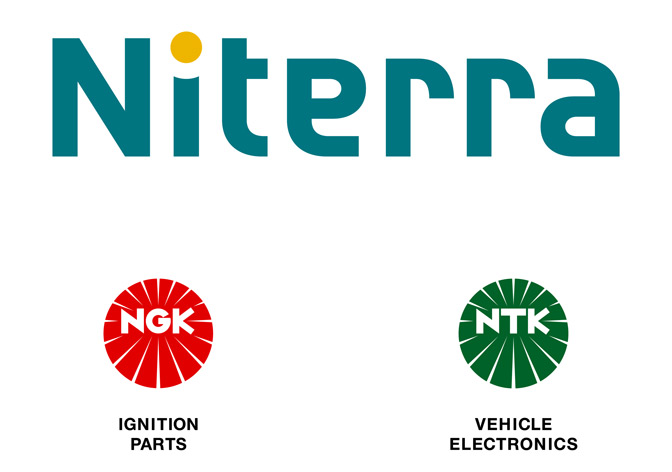Sensors
In a way, sensors are the sensory organs of the vehicle. A fundamental component of electronic control systems, they must record physical or chemical variables and convert them into electrical signals...
Environmental protection
Sensors make modern vehicles not only safer but also cleaner. They supply the basic information for clean and effective fuel combustion in the engine, thereby enabling exhaust emissions values and fuel consumption to be reduced significantly. Finally, they support the reliable functioning of high-efficiency exhaust re-treatment systems. Examples include the controlled 3-way catalytic converter, the diesel particulate filter or the DeNOx catalytic converter.
Function
 In a way, sensors are the sensory organs of the vehicle. A fundamental component of electronic control systems, they must record physical or chemical variables and convert them into electrical signals.
In a way, sensors are the sensory organs of the vehicle. A fundamental component of electronic control systems, they must record physical or chemical variables and convert them into electrical signals.
Types of sensors
In recent years, there has been an explosion in the number of different types of sensor. Many new types of sensor have been seen in particular in the area of safety and convenience electronics. Essentially, sensors can be categorised as follows: Position sensors (distance/angle sensors) Position sensors are used to capture the position of
- the throttle valve,
- of the accelerator or brake pedal,
- of the distance and angular positions in diesel injection pumps,
- of the fill level in the fuel tank,
- of the steering angle,
- of the angle of tilt, etc.
- the speed of crankshafts,
- camshafts and
- diesel injection pumps or
- wheel speeds.
- suction or charging pressure,
- fuel pressure, brake pressure,
- tyre pressure,
- hydraulic reservoir pressure (for ABS and power steering),
- refrigerant pressure (air conditioning system),
- modulation pressure (automatic transmission) and so on.
- suction or charge air temperature,
- ambient and interior temperatures,
- evaporator temperature (air conditioning system),
- coolant temperature,
- engine oil temperature,
- tyre air temperature and so on.
- pedal force,
- drive,
- brake and steering torque forces or
- the weight of the occupants of a vehicle (for adaptive restraint systems).
Examples of sensors for engine control:
Pulse sensor, crankshaft The crankshaft sensor captures the engine speed and the position of the crankshaft. The control unit uses these values to calculate the injection pulse and the ignition pulse. Camshaft position The camshaft sensor is located at the cylinder head and scans a ring gear at the camshaft. This information is used, for example, for the start of injection, for the signal to activate the solenoid valve for the pump/nozzle injection system and for cylinder-specific knock control. Air mass meter The air mass meter is installed between the air filter housing and the intake manifold. It measures the air mass drawn in by the engine. This variable provides the basis for calculating the fuel quantity that must be supplied to the engine. Intake air temperature/Outside temperature/Interior temperature Air temperature sensors capture the temperature of the ambient air. The values measured are used to control various systems (e.g. the air conditioning system) or as correction values for the injection system. The installation location is determined by the air temperature to be measured. The sensor for the intake air temperature, for example, is located in the air duct for the intake air. Coolant temperature The coolant temperature sensor is screw-mounted in the cooling system. The gauge tip protrudes into the coolant and records its temperature. The control unit uses this value to adapt the amount of fuel injected to the engine temperature. Throttle position Throttle valve sensors are attached to the throttle valve axle. They monitor the opening angle of the throttle valve. From the values, the engine electronics calculates the fuel quantity which is injected based on other factors. Knock sensors Knocking is an uncontrolled form of combustion in a petrol engine. As continuous knocking can damage the engine, it must be checked and regulated. The engine control unit evaluates the voltage signals received from the knock sensor and regulates the ignition point in a range just below what is known as the knock limit. Knock sensors are permanently monitored by the control unit. Intake pipe pressure The intake pipe pressure sensor measures the intake pipe vacuum downstream of the throttle valve and forwards this value to the engine control unit as an electrical signal. This is combined with the value of the air temperature sensor so that the air mass drawn in can be calculated. Oxygen sensors The oxygen sensor measures the residual oxygen content in the exhaust gas in order to ensure an optimum combustion mixture at all times. Depending on the type of sensor, a chemical element (titanium dioxide/zirconium dioxide) and the residual oxygen content of the exhaust gas bias a voltage, which is then used by the control unit as a measured variable.
Examples of sensors from car body electronics:
Wheel speed The wheel speed is used by driving safety systems such as ABS and ASR as a speed value as well as by GPS systems to calculate distance travelled. A fault will cause these systems to fail, significantly impairing safety. Speed, transmission The transmission sensor captures the transmission speed. The speed signal is used by the control unit for precision control of the shift pressure during shifting and to decide which gear should be engaged when. Speed, distances travelled Distance sensors are used to capture driving speed. They are mounted on the transmission or rear axle. They information obtained is required for the speedometer, cruise control and converter slip control. Engine oil level/Coolant level For reasons of operational safety and for increased comfort, levels such as engine oil, coolant and washer fluid are monitored with level sensors. The level sensors send a signal to the engine control unit which activates an indicator lamp. Brake lining wear The brake wear sensors are located on the brake linings and are subject to the same wear. A visual signal tells the driver that the wear limit has been reached.
Safety
The sensor information provides the basis for the function of numerous active and passive safety systems. Thanks to significant progress in the development of new sensors, there has been a constant increase in the capabilities of safety and driver assist systems in recent years. Sensors thus have a key role to play in increasing safety on our roads.















